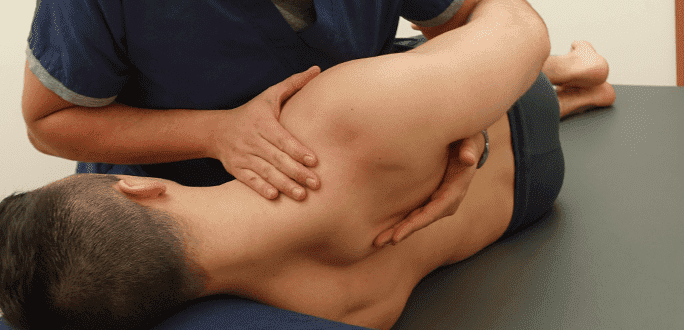July 20, 2021

When people have pinched nerves, it can cause them to experience debilitating pain. The pain that a person might feel will depend on which nerve is pinched. While many people are prescribed narcotic pain medications when they have pinched nerves, the medications do not treat the actual impingement and simply minimize the pain that people experience. Physical therapy can be used to both alleviate the pain and treat the underlying cause of it so that people can achieve healing without the potential of becoming addicted to narcotic pain medications.
The entire body is connected with nerves, which send and receive signals to and from the brain. The nerves let the brain know when different areas of the body are cold, hot or are in pain. When a nerve is damaged or pinch, it may send its signals randomly, telling the brain that the body part it innervates is in pain when there is no reason for it to be. Some people may also experience tingling or numbness because of the misfired signals from pinched nerves.
Pinched nerves have pressure placed on them from the surrounding bones or tissues. They may be caused by any of the following:
The pain associated with some pinched nerves may dissipate on its own in some cases. In others, a pinched nerve may lead to chronic problems and a need to address it.
When a person who is suffering from pain or other issues that are associated with a pinched nerve, his or her physical therapist may be able to help in several ways. The physical therapists will first sit down with their clients and determine the best physical therapy approach to help treat the underlying problem while also providing pain relief. The plan will be individualized as patients differ as do their injuries and the locations of them.
Physical therapists may outline an exercise routine that incorporates strengthening the muscles near the pinched nerve in order to help alleviate the pressure on the nerve so that it can heal. It is important for people who are injured to not simply try to incorporate strength training and other conditioning exercises on their own without professional guidance from their physical therapists, however. Doing so may result in people further injuring themselves, exacerbating the underlying problems as well as the pain.
People may develop pinched nerves for many different reasons. If they want to treat the source of the problem rather than simply focusing on alleviating the pain, they may want to consider seeing a physical therapist. Physical therapy may be used in addition to or instead of narcotic pain medications. It is possible that people may be able to permanently correct the impingement on their nerve so that they can be healed with physical therapy.
Dr. Lev Kalika is a world-recognized expert in musculoskeletal medicine. with 20+ years of clinical experience in diagnostic musculoskeletal ultrasonography, rehabilitative sports medicine and conservative orthopedics. In addition to operating his clinical practice in Manhattan, he regularly publishes peer-reviewed research on ultrasound-guided therapies and procedures. He serves as a peer reviewer for Springer Nature.
Dr. Kalika is an esteemed member of multiple professional organizations, including: